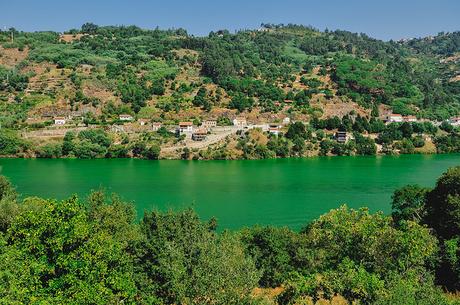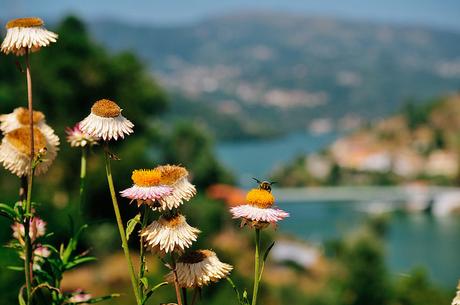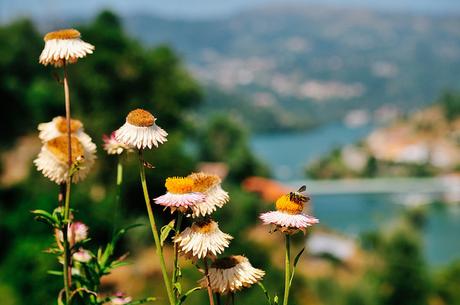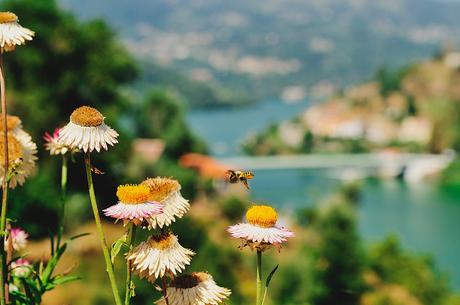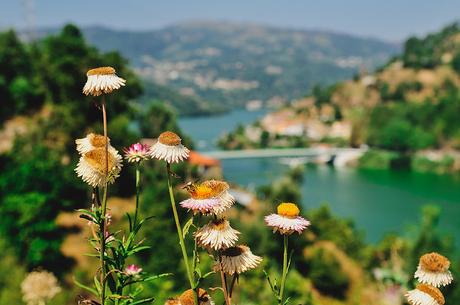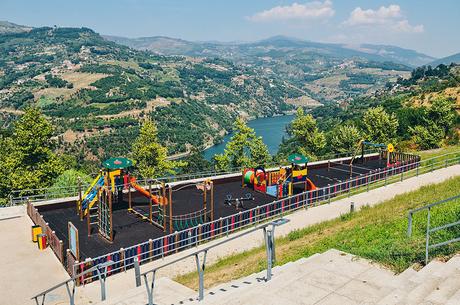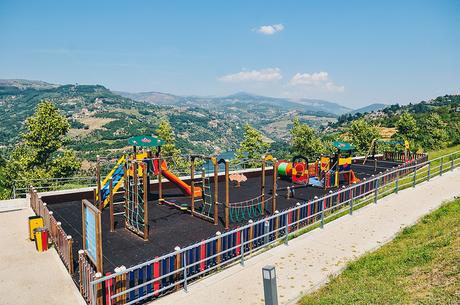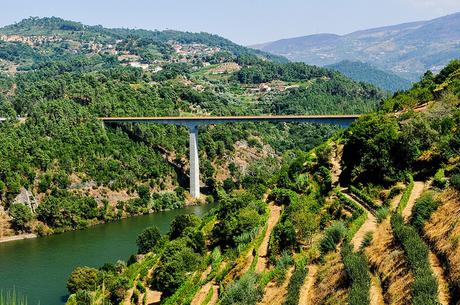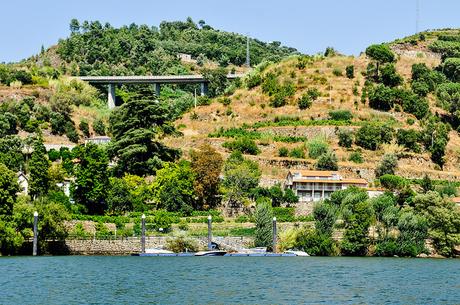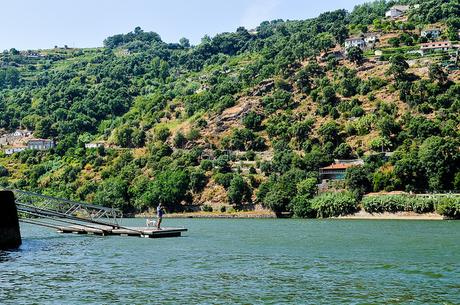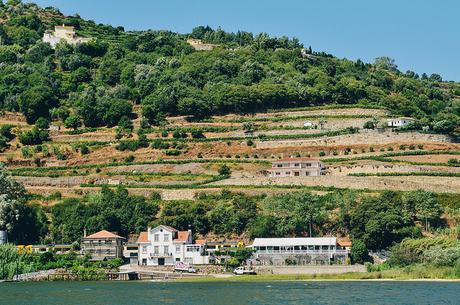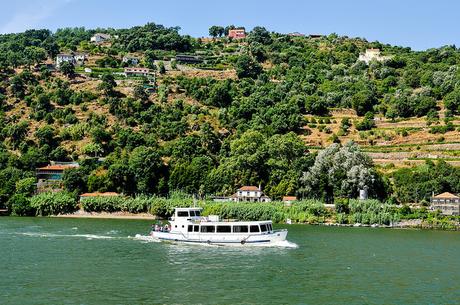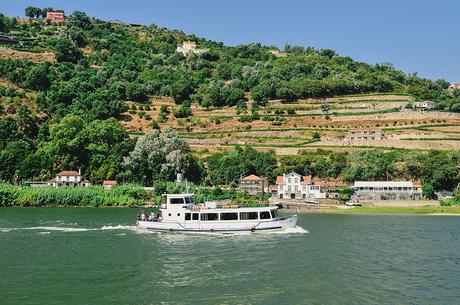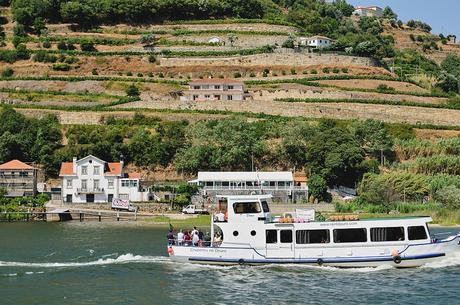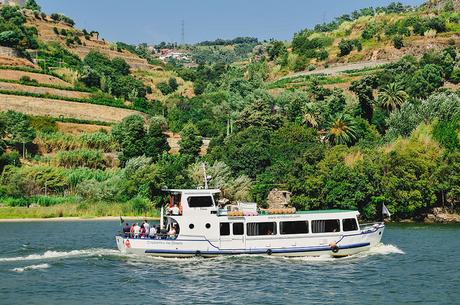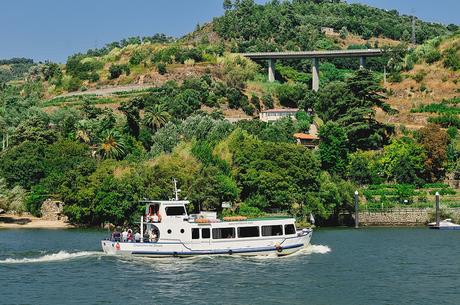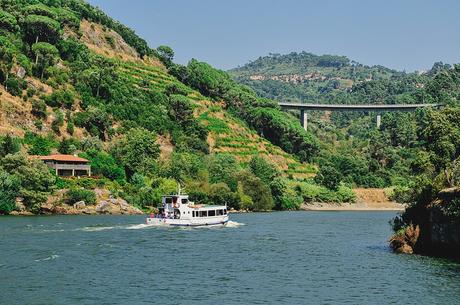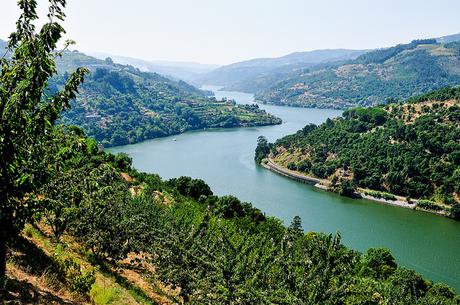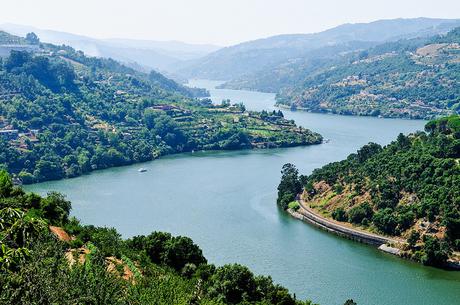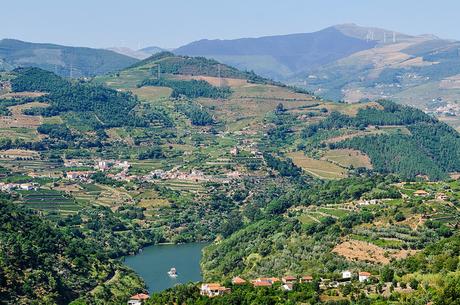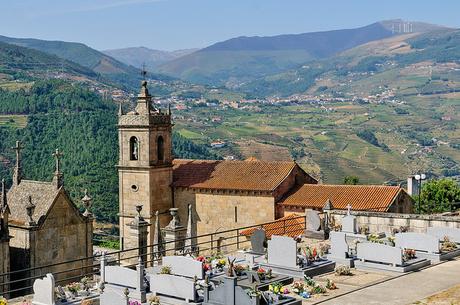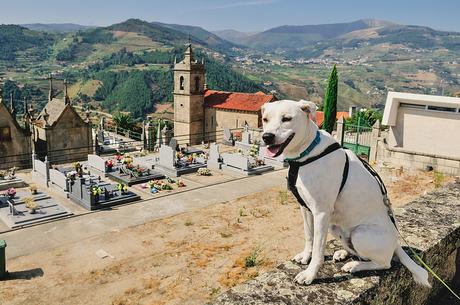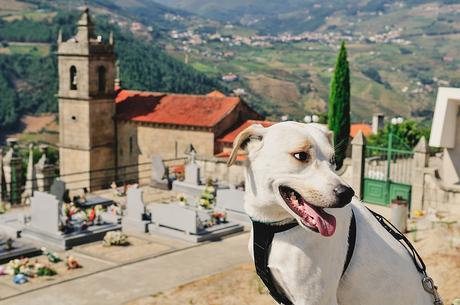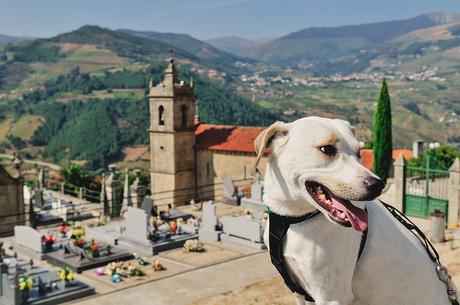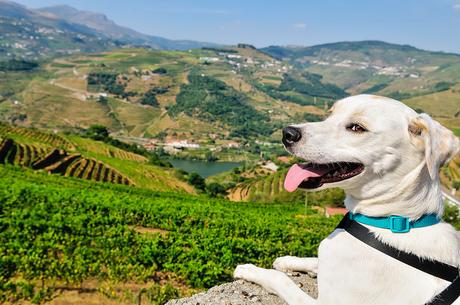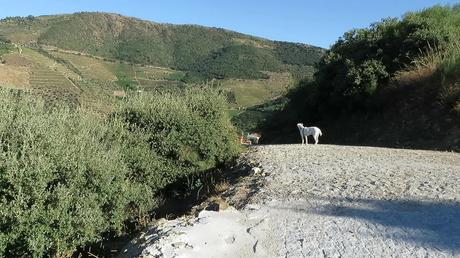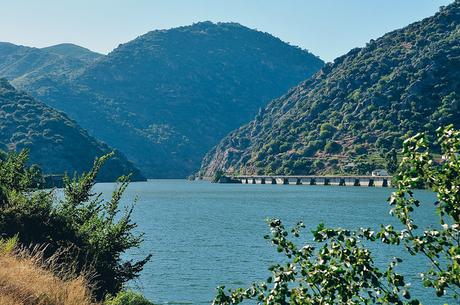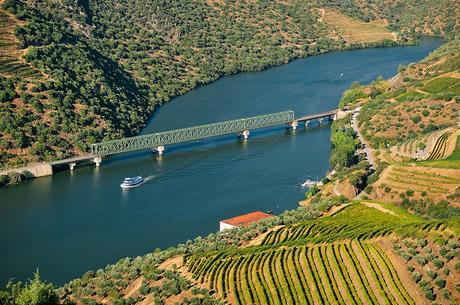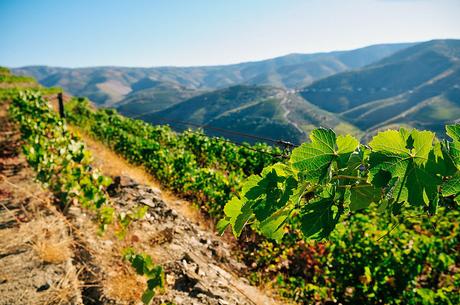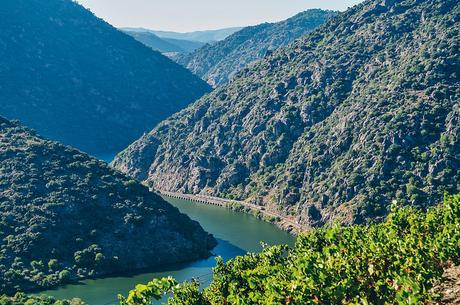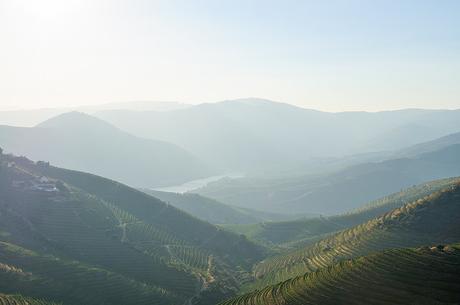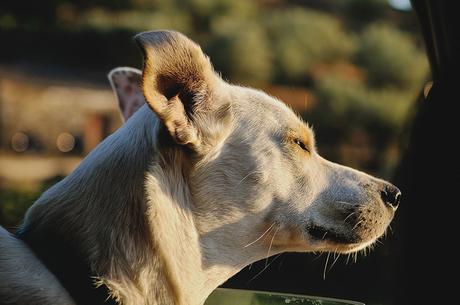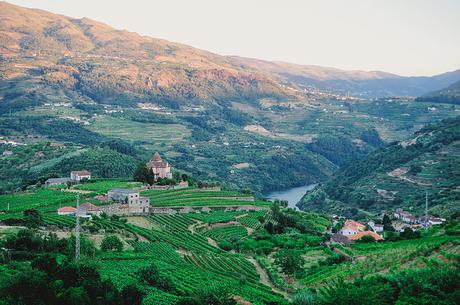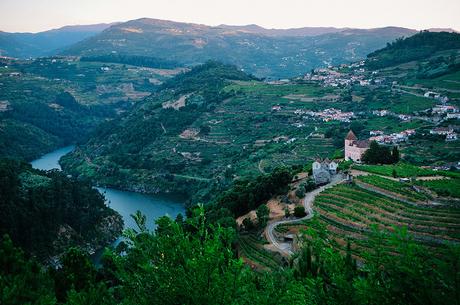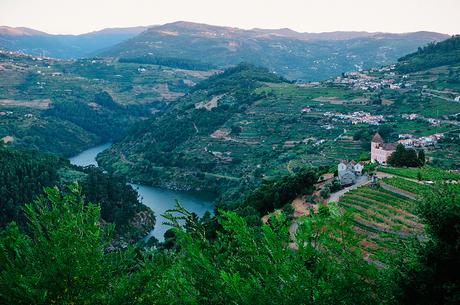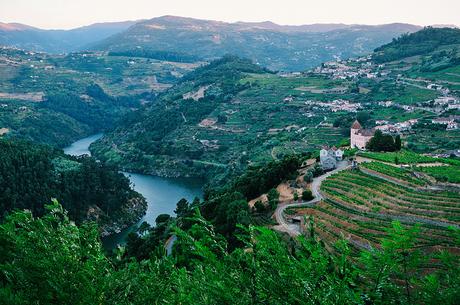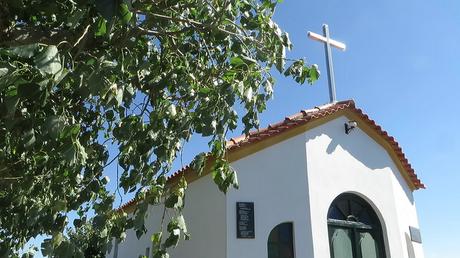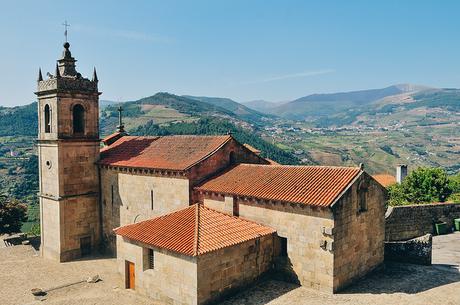
The Douro Valley may not be the most well-known of wine regions, but it is one of the oldest demarcated wine regions in the world, first regulated in 1756 by the government of the Marquis of Pombal (after Chianti in Tuscany in 1716 and Tokay in Hungary in 1737, but the subject of regulation is debated). In recognition of nearly 2,000 years of wine production in the Alto Douro Region, UNESCO declared 26,400 hectares (13 counties) of it as a World Heritage site in 2001.
History aside, viticulture aside, the Douro Valley’s natural gifts are its landscapes: the Rio Douro and its tributaries below canyons of lush green and rolling hillsides of schist are both dramatic and serene. While the region has long been developed to produce wine, the other fruits of its rich soil are olives and almonds, the latter of which blossom beautifully in the spring. I’ve visited the Douro Valley by train and car but have yet to go by boat, so most of my photos are from above.
These are some selected images from points along the roads we travelled two weekends ago; more can be seen in the slideshow below. Click through to the album to see the videoclips: Douro Valley [August 2016]
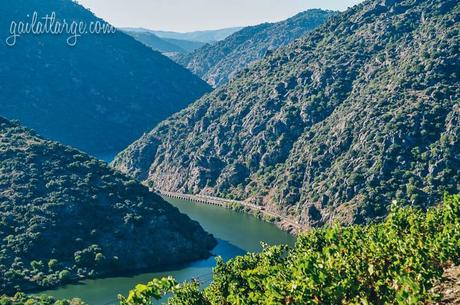
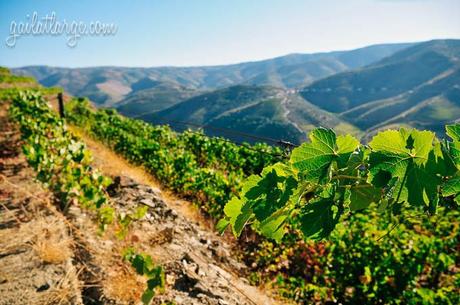
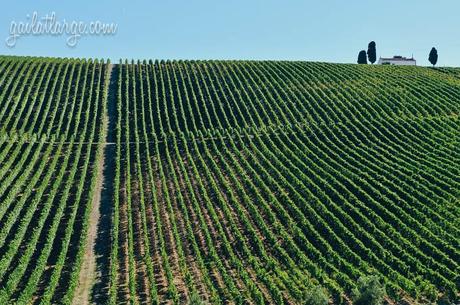
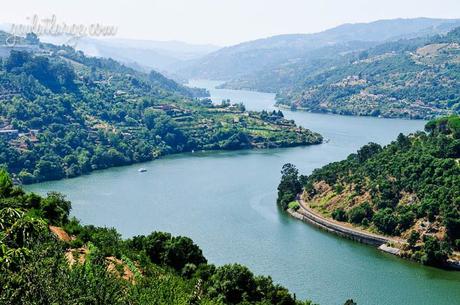
Slideshow (the videos show up here as stills; click to view the album in Flickr):
